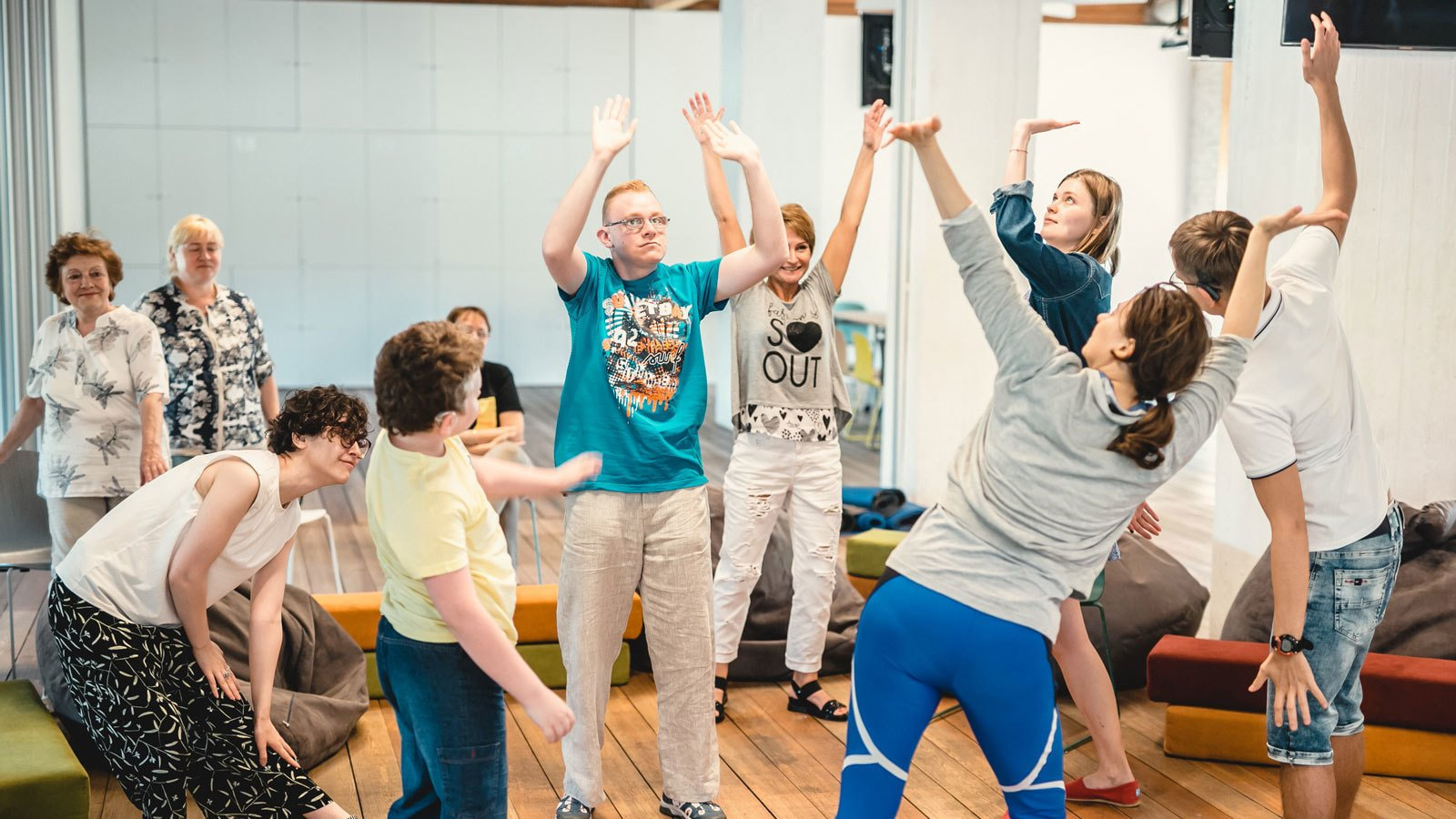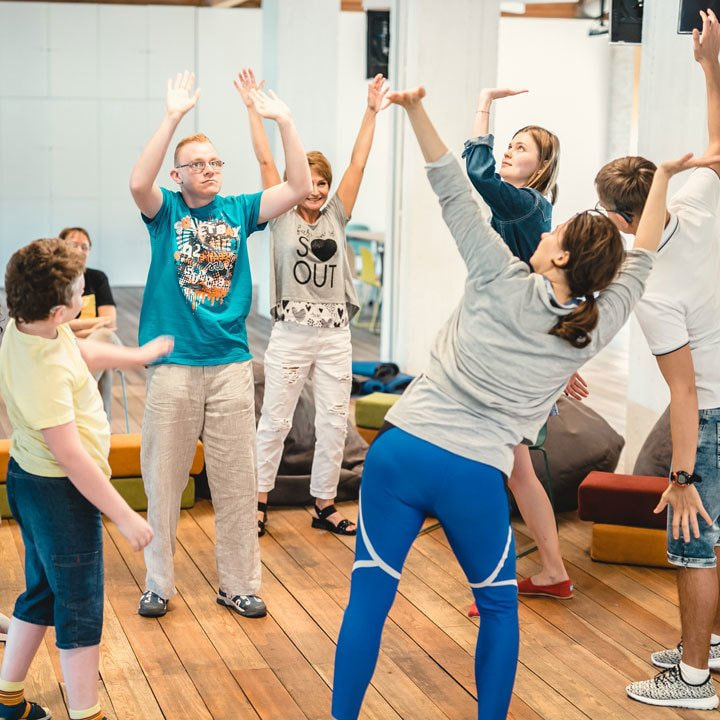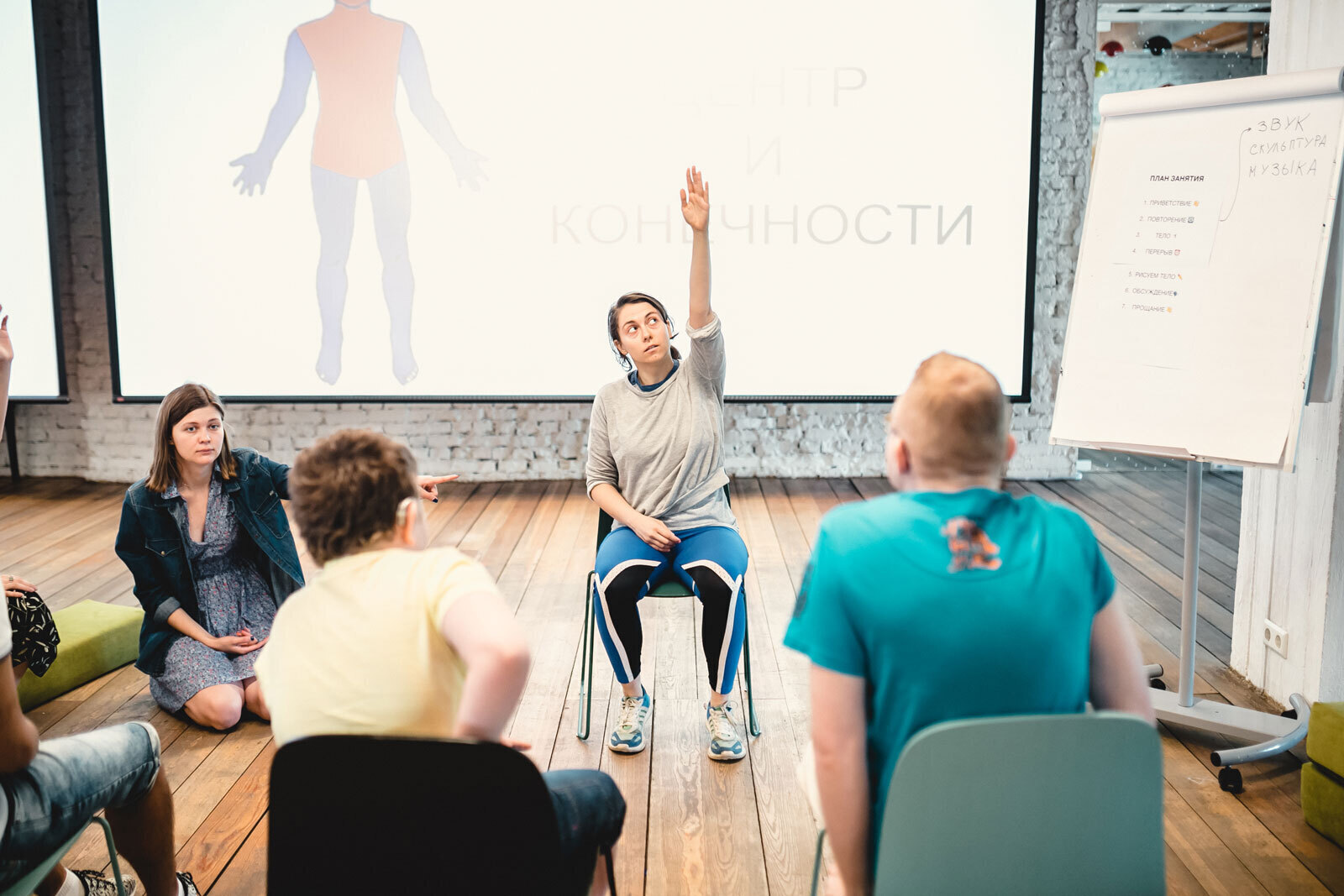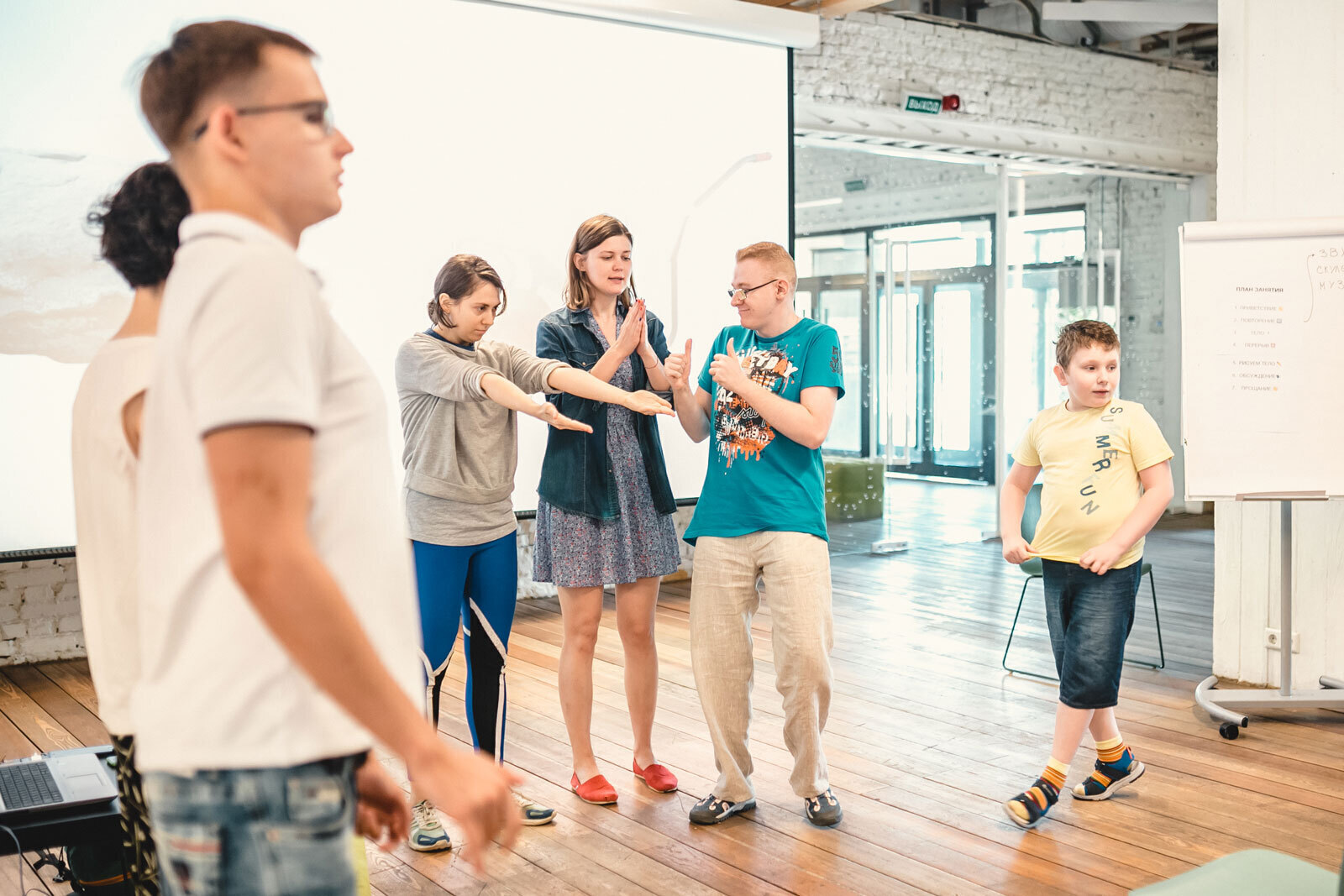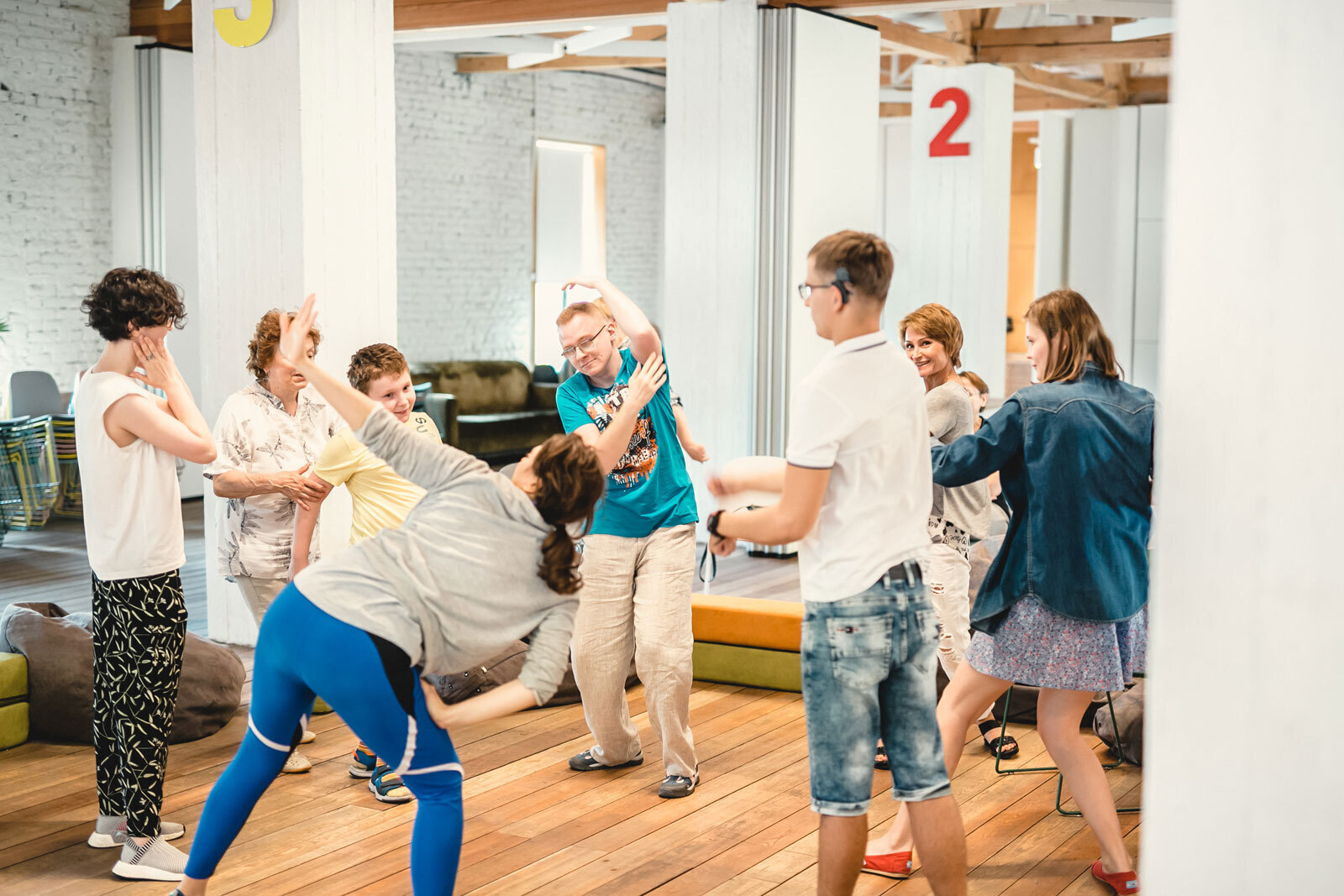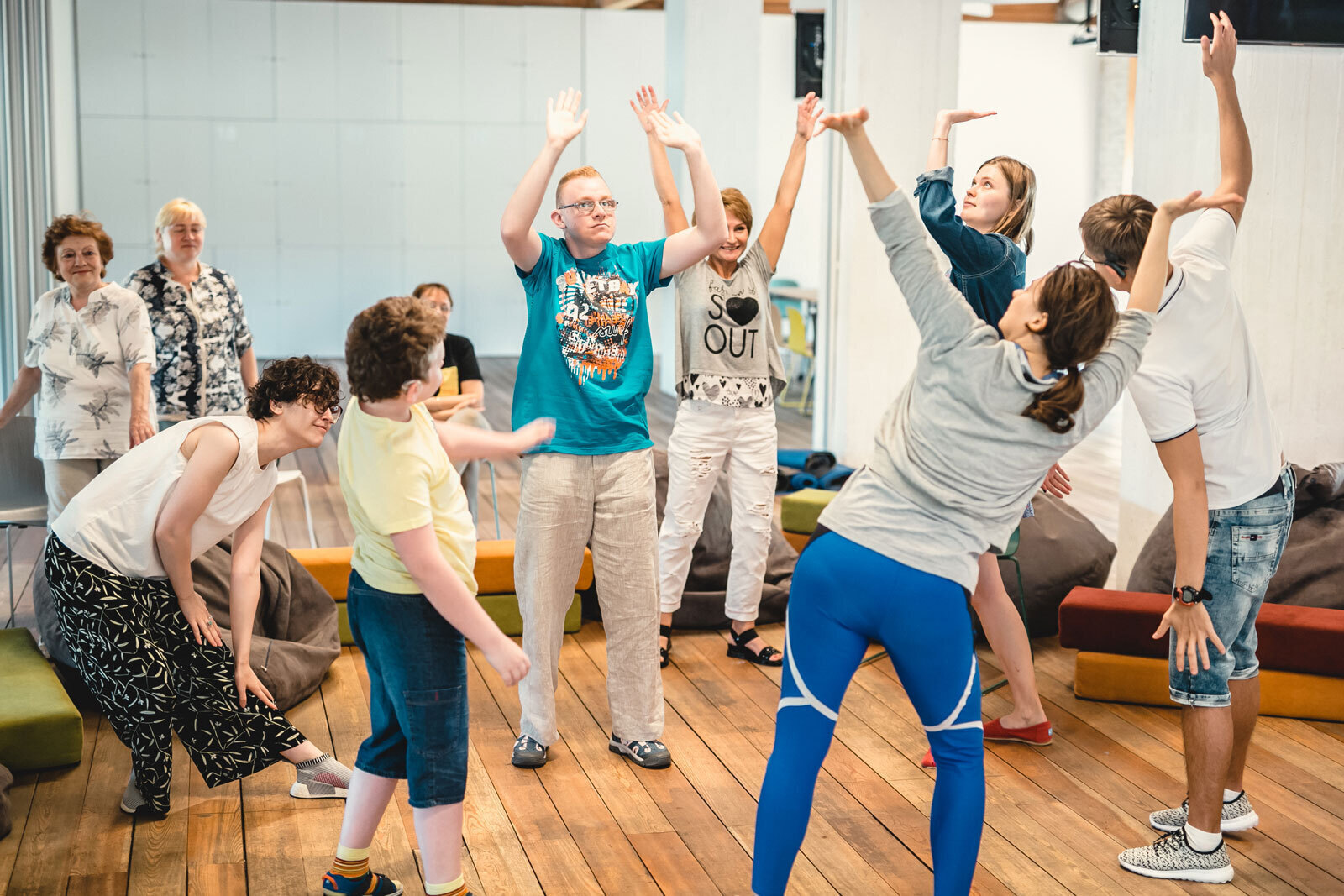In June 2019, Garage Museum of Contemporary Art hosted a dance laboratory for students and alumni of the special boarding school #65 for deaf and hard of hearing children with intellectual disability.
The dance laboratory was designed by Summer School’s Dance workshop director, choreographer, and dance artist Alena Papina, who is also a pedagogue and co-curator of the project, together with staff from Garage’s Inclusive Programs Department and guest teachers Alexander Anikushin, Alina Zhekamukhova and Lyudmila Luchkova, with the participation of Sofia Nikonorova, expert representing the Center for Curative Pedagogics. Taking into account all nuances that may occur in the process of communication with deaf and hard of hearing children with intellectual disability, the lab curators made sure that the classes were equipped with a visual schedule of events, organized a quiet room for sensory deprivation, and assigned sign language interpreters to each of the classes, who worked as mediators between the participants and the host of the laboratory.
Composed of five sessions that took place at Garage Education Center, the laboratory program included a theoretical as well as a practical block. Participants discussed human anatomy, body parts, the means of moving around the space, the connection between dance and music, and the compositional possibilities of physical interaction of bodies within a space.
Through the work with their own weight and body, as well as partners and objects, the participants practically explored the environment and various communication formats, with dance becoming a useful tool and a medium of alternative communication for the young students following a series of classes which brought them closer to the understanding of “different ways to be together”, which is an important part of contemporary dance philosophy. Not focusing on competition and results, the lab’s tutors allowed participants to enjoy the self-sufficient process of acquiring a new physical experience and analyzing the movements produced by their bodies. All exercises were inspired by the system of movement analysis introduced by Rudolf von Laban and the principles of empirical cognition of anatomy and biomechanics (e.g. moving after a particular body part along various trajectories). The creative part of the lab was based around the methods of learning dance, that is improvisation aimed at personal openness and the physical embodiment of one’s self.
An inaugural project of its type for Garage, each of the laboratory’s sessions was discussed and analyzed by the group together with the curator and teachers, taking into consideration comments from parents and the sensual and emotional response from the participants. Due to its participatory format, the project proved to be a starting point for Garage in the Museum’s work with people with two different forms of disability, while the positive feedback from both participants and parents underscored the necessity to expand the acquired experience.
